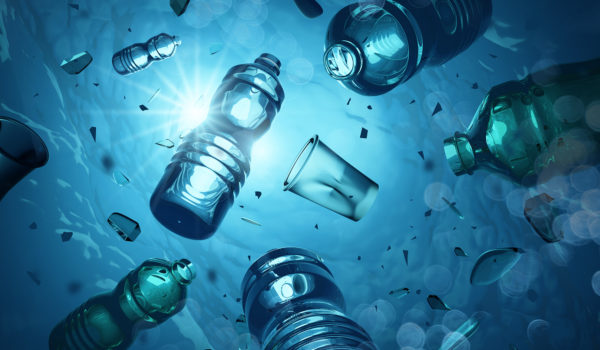According to the American Chemical Association, the average American consumes up to 121,000 microplastic particles each year—through air, water, and soil—and people who drink only bottled water could consume an additional 90,000. Now, California is taking the lead in trying to regulate the presence of microplastics in drinking water, with significant implications for manufacturers in the state and beyond. Here’s what manufacturers should know about California’s current microplastics requirements—and how they can prepare for future regulations, today.
Continue reading the article below or watch this short video for key points and takeaways.
What Are Microplastics, and Why Do They Matter?
Microplastics are tiny plastic particles manufactured at a small scale (e.g., microbeads in cosmetics) or degraded from larger plastic items. Invisible to the naked eye, their actual composition, like the plastics they come from, can vary considerably—coming in different shapes (e.g., fibers, foams, films and fragments) and polymer types (e.g., polyethylene or polypropylene).
Much is still unknown about microplastics, including the primary pathways through which people are exposed to them and their impact on human health. Some studies, however, suggest that microplastics can act as endocrine disruptors or carcinogens when present in the body.
Currently, there is no EPA-approved method to identify the broad array of microplastics in drinking water, nor is there a standardized water treatment method to remove them.
California’s Present and Future Regulatory Framework
California’s State Water Resources Control Board (SWRCB) is the first government body in the world seeking to establish guidelines for acceptable levels of microplastics in drinking water.
In September 2022, the Board approved testing requirements to detect microplastics in drinking water based on the 2018 California Safe Drinking Water Act: Microplastics, an extension of the 1974 Safe Drinking Water Act, a federal statute requiring the monitoring and public notification of drinking water contaminants.
This means that select public water systems must now monitor for microplastics over the next four years. The first phase of water testing, which began this fall, focuses on source waters, including surface water, groundwater, or groundwater directly connected to surface waters that supply community water systems serving over 100,000 people. While the timeline for future regulations is uncertain, it will likely depend on the findings from this monitoring.
Notably, as testing continues over the next few years, this focus on source water could indicate that California intends to take a watershed-based approach to regulating microplastics pollution. This could lead to microplastic discharge and treatment regulations not just for public water and wastewater systems, but also at the upstream source of the pollution: those that manufacture, use or discharge microplastics.
These regulations seem likely to take the form of individual water discharge requirement (WDR) permits issued by the SWRCB, which set discharge limits for a permit holder’s waste stream—broken down into types of wastes and specific releasable amounts that can be discharged to a local sewer system as wastewater. Those with permits would then be required to monitor and test discharge levels and self-report any issues.
It’s also possible, however, that WDR permits will be insufficient to meet applicable water quality standards, given the ubiquity of microplastics and growing concerns over the public health and safety risks posed by ingesting them. If that happens, manufacturers may also be subject to total maximum daily loads (TMDLs), which will apportion load reductions among specific pollutants that can be discharged in a body of water. The pollutant data would also be publicly accessible.
Because TMDLs are a popular avenue for litigation brought by environmental groups, microplastics TMDLs could mean that manufacturers releasing microplastics into the watershed could become embroiled in costly litigation.
Manufacturers Should Take Steps to Prepare Today
Manufacturers that use or discharge microplastics shouldn’t wait until new regulations are in place to implement preventative measures. Instead, to avoid costly liabilities down the line, they should follow the SWRCB’s example and initiate their own testing program now.
Manufacturers should start by determining the number of plastics and polymers in their waste stream and stormwater releases. Since the specific elements of microplastics that the SWRCB will regulate are still uncertain, they should collect detailed information about the amount of plastic nodules, polymer types, and the constituent chemicals they may be releasing into the waste stream.
This data can help manufacturers determine how their processes can be altered or managed to proactively reduce microplastics discharge, while also empowering manufacturers to push back against WDR or TMDL limitations with data-supported arguments before regulations go into effect.
Other states are closely monitoring to see what California does next, making this a critical opportunity for manufacturers to understand and address their regulatory exposure. For more information on how best to prepare, contact the author or any member of Frost Brown Todd’s Environmental practice group.
Essential Environmental Podcast
This podcast demystifies the complicated world of environmental law, helping developers and property owners understand the countless acronyms and agencies they might come across.

